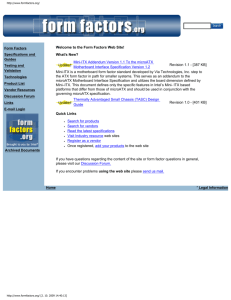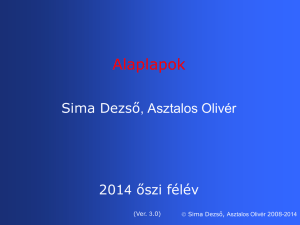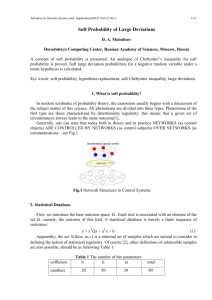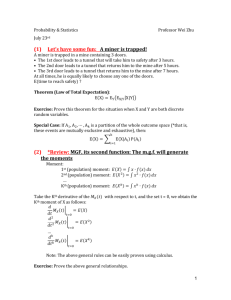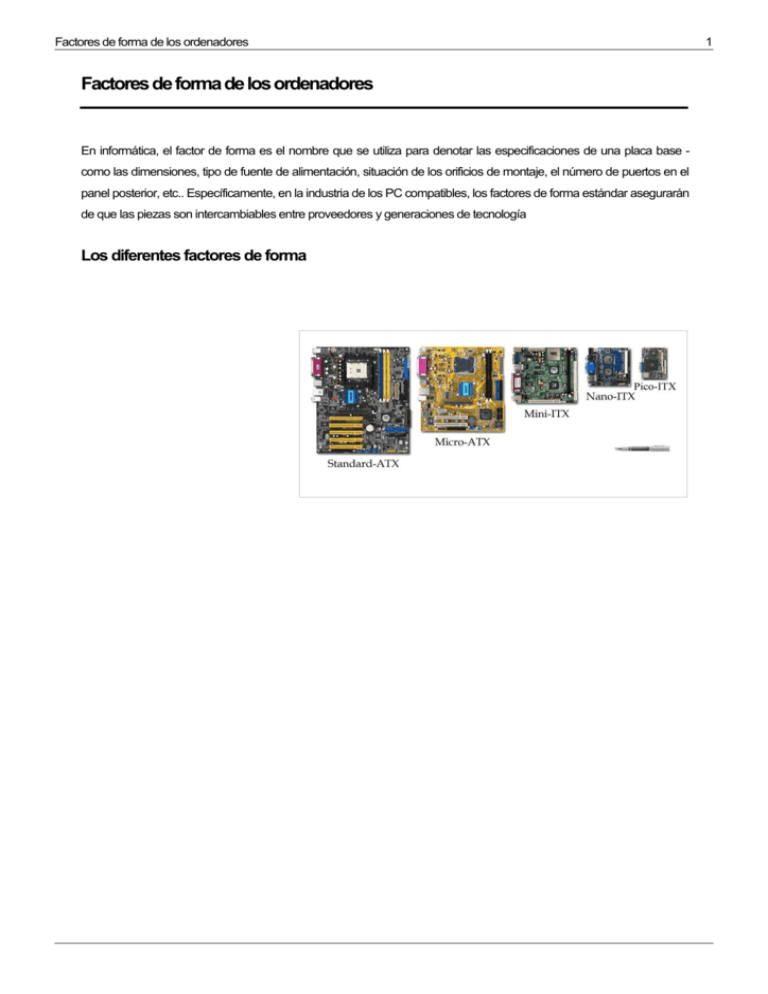
Factores de forma de los ordenadores
Factores de forma de los ordenadores
En informática, el factor de forma es el nombre que se utiliza para denotar las especificaciones de una placa base como las dimensiones, tipo de fuente de alimentación, situación de los orificios de montaje, el número de puertos en el
panel posterior, etc.. Específicamente, en la industria de los PC compatibles, los factores de forma estándar asegurarán
de que las piezas son intercambiables entre proveedores y generaciones de tecnología
Los diferentes factores de forma
1
Computer form factor
2
Comparacióndefactoresdeforma
Tabla de factores de forma
Factores de forma
XT
Fecha
Tamaño Máx
IBM 1983
216×279 mm
AT (Advanced
Technology)
IBM 1984
305× 279-330 mm
Typical
Typical
feature-set
CPU
(compared flexibility
to ATX)
Power
handling
Notas
(uso típico, mercado, etc.)
Obsolete, see Industry Standard
Architecture. The IBM Personal
Computer XT was the successor to the
original IBM PC, its first home
computer. As the specifications were
open, many clone motherboards were
produced and it became a de facto
standard.
Obsolete, see Industry Standard
Architecture. Created by IBM for the
IBM Personal Computer/AT, an Intel
80286 machine. Also known as Full AT,
it was popular during the era of the Intel
80386 microprocessor. Superseded by
ATX.
Baby-AT
IBM 1985
216 × 254-330 mm
ATX
Intel 1996
305 × 244 mm
SSI CEB
SSI EEB
SSI MEB
SS
I
305 × 267 mm
SS
I
305 × 330 mm
SS
I
411 × 330 mm
IBM's 1985 successor to the AT
motherboard. Functionally equivalent to
the AT, it became popular due to its
significantly smaller size.
Created by Intel in 1995. As of 2007, it
is the most popular form factor for
commodity motherboards. Typical size
is 9.6 × 12 in although some companies
extend that to 10 × 12 in.
Created by the Server System
Infrastructure (SSI) forum. Derived
from the EEB and ATX specifications.
This means that SSI CEB motherboards
have the same mounting holes and the
same IO connector area as ATX
motherboards.
Created by the Server System
Infrastructure (SSI) forum. Derived
from the EEB and ATX specifications.
This means that SSI CEB motherboards
have the same mounting holes and the
same IO connector area as ATX
motherboards.
Created by the Server System
Infrastructure (SSI) forum. Derived
from the EEB and ATX specifications.
This means that SSI CEB motherboards
have the same mounting holes and the
same IO connector area as ATX
motherboards.
Computer form factor
microATX
3
1996
244 × 244 mm
Mini-ATX
AOpen 2005
150 ×150 mm
FlexATX
Intel 1999
228.6 × 190.5 mm max.
Mini-ITX
VIA 2001
170 × 170 mm max.
A smaller variant of the ATX form
factor (about 25% shorter). Compatible
with most ATX cases, but has fewer
slots than ATX, for a smaller power
supply unit. Very popular for desktop
and small form factor computers as of
2007.
Mini-ATX is slightly smaller than
Micro-ITX. Mini-ATX motherboards
were design with MoDT (Mobile on
Desktop Technology) which adapt
mobile CPU for lower power
requirement, less heat generation and
better application capability.
A subset of microATX developed by
Intel in 1999. Allows more flexible
motherboard design, component
positioning and shape. Can be smaller
than regular microATX.
A small, highly-integrated form factor,
designed for small devices such as thin
clients and set-top boxes.
Nano-ITX
VIA 2003
120 × 120 mm
Pico-ITX
VIA 2007
Mobile-ITX
VIA 2007
Targeted at smart digital entertainment
devices such as PVRs, set-top boxes,
media centers and Car PCs, and thin
devices.
100× 72 mm max.
75 × 45 mm
Neo-ITX
VIA 2012
BTX (Balanced
Technology
Extended)
Intel 2004
MicroBTX (or
uBTX)
Intel 2004
PicoBTX
Intel 2004
170× 85 × 35 mm
325 x 267 mm max.
Used in the VIA Android PC
A standard proposed by Intel as a
successor to ATX in the early 2000s,
according to Intel the layout has better
cooling. BTX Boards are flipped in
comparison to ATX Boards, so a BTX
or MicroBTX Board needs a BTX case,
while an ATX style board fits in an
ATX case. The RAM slots and the PCI
slots are parallel to each other. Processor
is placed closest to the fan. May contain
a CNR board.
264 × 267 mm max.
203 × 267 mm max.
DTX
AMD 2007
200 × 244 mm max.
Mini-DTX
AMD 2007
200 × 170 mm max.
smartModule
Digital-Logic
66 × 85 mm
Used in embedded systems and single
board computers. Requires a baseboard.
ETX
Kontron
95 × 114 mm
Used in embedded systems and single
board computers. Requires a baseboard.
Computer form factor
4
COM Express Basic
PICMG
95 × 125 mm
Used in embedded systems and single
board computers. Requires a carrier
board.
COM Express
Compact
PICMG
95 × 95 mm
Used in embedded systems and single
board computers. Requires a carrier
board.
nanoETXexpress
Kontron
55 × 84 mm
Used in embedded systems and single
board computers. Requires a carrier
board. Also known as COM Express
Ultra and adheres to pin-outs Type 1 or
Type 10[1]
CoreExpress
SFF-SIG
58 × 65 mm
Used in embedded systems and single
board computers. Requires a carrier
board.
Extended ATX
(EATX)
305 × 330 mm
Unknown
Used in rackmount server systems.
Typically used for server-class type
motherboards with dual processors and
too much circuitry for a standard ATX
motherboard. The mounting hole pattern
for the upper portion of the board
matches ATX.
Enhanced Extended
ATX (EEATX)
Supermicro
347 × 330 mm
LPX
229 × 279-330 mm
Unknown
Mini-LPX
Unknown
PC/104™
PC/104
Consortium
1992
PC/104-Plus™
PC/104
Consortium
1997
PCI/104-Express™
PC/104
Consortium
2008
PCIe/104™
NLX
UTX
PC/104
Consortium
2008
Based on a design by Western Digital, it
allowed smaller cases than the AT
standard, by putting the expansion card
slots on a Riser card.[2] Used in slimline
retail PCs. LPX was never standardized
and generally only used by large OEMs.
Used in slimline retail PCs.
203-229 × 254-279 mm
3.8 × 3.6
inch
3.8 × 3.6
inch
3.8 × 3.6 in
Used in embedded systems. AT Bus
(ISA) architecture adapted to
vibration-tolerant header connectors.
Used in embedded systems. PCI Bus
architecture adapted to vibration-tolerant
header connectors.
Used in embedded systems.
PCI Express architecture adapted to
vibration-tolerant header connectors.
3.8 × 3.6
inch
Used in embedded systems.
PCI/104-Express without the legacy PCI
bus.
203-229 × 254-345 mm
A low-profile design released in 1997. It
also incorporated a riser for expansion
cards, and never became popular.
Intel 1999
TQ-Components
2001
Used in rackmount server systems.
Typically used for server-class type
motherboards with dual processors and
too much circuitry for a standard E.ATX
motherboard.
88 × 108 mm
Used in embedded systems and IPCs.
Requires a baseboard.
Computer form factor
WTX
SWTX
HPTX
5
Intel 1998
355.6 × 425.4 mm
A large design for servers and high-end
workstations featuring multiple CPUs
and hard drives.
418 × 330 mm
A proprietary design for servers and
high-end workstations featuring multiple
CPUs.
Unknown
EVGA 2008
345.44 × 381 mm
XTX
2005
95 × 114 mm
Graphical comparison of physical sizes
A large design by EVGA currently
featured on two motherboards; the
eVGA SR2 and SRX. Intended for use
with multiple CPUs. Cases require 9
expansion slots to contain this
form-factor.
Used in embedded systems. Requires a
baseboard.
Computer form factor
6
Numero màxim de ranures PCI/AGP/PCI-e
Caixa compatible ATX::
Specification
Number
HPTX
9
ATX
7
MicroATX
4
FlexATX
3
DTX
2
Mini-DTX/DTX 2
Mini-ITX
1
Computer form factor
7
Article Sources and Contributors
Article Sources and Contributors
Computer form factor Source: http://en.wikipedia.org/w/index.php?oldid=504798764 Contributors: 84user, Aervanath, Ahruman, Al Lemos, Alecv, Algebra, Anwar saadat, Arjun G. Menon,
Avernar, Beland, Beta34, Betacommand, Bomazi, Bpinakin, Bromador, Chowbok, CommonsDelinker, Coopman86, Cvandegraaf, Dayj, Dev8Oz, Diamondland, Edokter, Eivind, Ewlyahoocom,
FT2, Formina Sage, Frap, Frees, Frzl, Grafen, Hairy Dude, Ham Pastrami, HeatSink(ru), J-r-krueger, Jamelan, Jarble, Jasper Deng, Johnmneil, JustinRossi, Khazar, Khazar2, Kozuch, Kskjon,
Letdorf, Liam J. McSherry, LittleWink, Llnnggii, MC10, Maciekmn, Mahjongg, Markus Kuhn, MithrandirAgain, Mo ainm, Moojoe, Ms7330, Multixfer, Mustag777, N5iln, Nono64, Npd2983,
Numb3r4, Oneopen, Pecunia, Pklec, Poppafuze, ProfPolySci45, R'n'B, Rcsprinter123, Rilak, RobertMfromLI, Robhd, RockMFR, ShelfSkewed, Sswonk, Swpb, The Thing That Should Not Be,
Treekids, Undisclosedarea, Vegaswikian, Veikk0.ma, Wbm1058, WegianWarrior, Wtshymanski, 75 anonymous edits
Image Sources, Licenses and Contributors
Image:VIA Mini-ITX Form Factor Comparison.jpg Source: http://en.wikipedia.org/w/index.php?title=File:VIA_Mini-ITX_Form_Factor_Comparison.jpg License: Creative Commons
Attribution 2.0 Contributors: VIA Gallery from Hsintien, Taiwan
Image:Motherboards form factors.svg Source: http://en.wikipedia.org/w/index.php?title=File:Motherboards_form_factors.svg License: Creative Commons Attribution-ShareAlike 3.0
Unported Contributors: GreyCat
Image:Formfactors.gif Source: http://en.wikipedia.org/w/index.php?title=File:Formfactors.gif License: Creative Commons Attribution 3.0 Contributors: HeatSink, WikipediaMaster
Image:Abit-kt7-large.jpg Source: http://en.wikipedia.org/w/index.php?title=File:Abit-kt7-large.jpg License: Creative Commons Zero Contributors: Gary Houston
Image:Mini-itx-motherboard.jpg Source: http://en.wikipedia.org/w/index.php?title=File:Mini-itx-motherboard.jpg License: Creative Commons Attribution-ShareAlike 3.0 Unported
Contributors: A Meaden
Image:Top_EPIA_PX10000G_Motherboard_new.jpg Source: http://en.wikipedia.org/w/index.php?title=File:Top_EPIA_PX10000G_Motherboard_new.jpg License: Public Domain
Contributors: derivative work: Beta34 (talk) Top_EPIA_PX10000G_Motherboard.JPG: Dayj
License
Creative Commons Attribution-Share Alike 3.0 Unported
//creativecommons.org/licenses/by-sa/3.0/
8
CAIXES D'ORDINADOR
Les caixes tenen diferents dimensions segons el gust del client. Els formats més típics de placa base
que accepten són:
* ATX (standard): Fins el 2007 era el format típic de placa base.
* EATX: Factor de forma per plaques bases de servidors.
* MicroATX: Compatible amb caixes per plaques base ATX.
* MiniITX: Per petits ordinadors.
PETIT DOCUMENT ON ANALITZEM LES WEBS DE COOLER MASTER, CORSAIR I
ANTEC. Afegeixo només les dimensions de la caixa i el format de plaques base admesos.
Falta la font. De moment només hem quadrat placa base i caixa. O sigui responem a la
pregunta quina caixa compro per una placa base concreta. També podem respondre al revés,
donada una caixa quina placa base puc posar.
Cooler master
full tower:
•
•
250 x 605.6 x 578.5 mm
Micro-ATX, ATX, XL-ATX
•
•
344 x 704 x 664 mm
Micro-ATX, ATX, E-ATX, XL-ATX, SSI CEB, SSI EEB
* (W)243 x (H)560 x (D) 564 mm
* Micro - ATX / ATX / E-ATX
* 230 x 550 x 590 mm
*Micro-ATX / ATX / E-ATX / XL-ATX
MId tower
•
*214.5 x 496 x 528.8mm
Micro-ATX, ATX, Mini-ITX
•
•
8.4 x 19.5 x 20.8 inches
Micro-ATX / ATX
•
229 x (H) 484.5 x (D) 523.5 mm
Micro-ATX, ATX
•
MiniTorre
*16.54 x 7.10 x 15.35
•
microATX
•
•
(W) 180 x (H) 352 x (D) 440 mm
microATX
•
•
150 x 368 x 464 mm
Micro-ATX, ATX
•
•
(W) 195mm x (H) 370mm x (D) 385mm
microATX
m-ITX
•
•
240 x 207.4 x 401.4mm
miniITX
CORSAIR
Dimensions: 20.9” x 8.7” x 19.5”
ATX and Micro ATX motherboards
mid tower
546mm (L) x 229mm (W) x 521mm (H)
ATX, Matx
mid tower
609mm X 609mm X 229 mm)
ATX, EATX, mATX
(507mm x 592mm x 265mm)
ATX, mATX
full tower
mid tower
501mm (H) x 232mm (W) x 533mm (L)
ATX, mATX
19.1” x 8.3” x 17.7” mid tower
ATX, mATX
20.5” x 8.1” x 20”
ATX, mATX
20.5” x 8.1” x 19.8”
ATX, mATX
mid tower
ANTEC
43,5 (Al) x 21,2 (An) x 43,6 (Pr) cm
Placa base:Mini-ITX, microATX
514 mm (Al) x 205 mm (An) x 507 mm (Pr)
Placa base: Mini-ITX, microATX, y ATX estándar
635 mm (Al) x 305 mm (An) x 610 mm (Pr)
Placa base: Mini-ITX, microATX, ATX estándar
737mm (Al) x 337mm (An) x 658mm (Pr)
Placa base: Mini-ITX, microATX, ATX estándar y ATX extendida
526 mm (Al) x 231 mm (An) x 561 mm (La)
Placa base: XL-ATX [345 mm x 262 mm (13,6" x 10,3")], ATX estándar, microATX, Mini-ITX
488mm (Al) x 262mm (An) x 536mm (Pr)
Admite placas base Micro ATX y estándar ATX
440 mm (Al) x 205 mm (An) x 470 mm (La)
Placas base: Mini-ITX, MicroATX, ATX estándar
43,0cm (Al) x 20,5cm (An) x 46,8cm (Pr)
Placas base soportadas: ATX, microATX, Mini-ITX
481mm x 205mm x 440mm
ATX, microATX, Mini-ITX
495mm (Al) x 267mm (An) x 546mm (Pr)
ATX, microATX, Mini-ITX
550 mm (Al) x 275 mm (An) x 515 mm (Pr)
Mini-ITX, microATX, Standard ATX
42,4 cm (Al) x 20,5 cm (An) x 46,2 cm (Pr)
ATX, microATX, Mini-ITX
FACTORS DE FORMA DE FONTS
D'ALIMENTACIÓ
Google Search
HOME
Home
ABOUT US
Support
PRODUCTS
Tech Talk
WHERE TO BUY
SUPPORT
CONTACT US
INDUSTRIAL
LANGUAGE
List of computer PSU form factors
Tech Talk
List of computer PSU form factors
ATX PS/2
This is by far the most popular PSU form factor and is often called the “standard ATX PSU”
Standard dimension for this form factor is: 150mm (W) x 86mm (H) x 140mm (D)
PSU with depth longer than 140mm can still be considered as an ATX PS/2 model
open in browser PRO version
Are you a developer? Try out the HTML to PDF API
pdfcrowd.com
ATX PS/3
This form factor is compatible with ATX PS/2, the only difference is the shorter depth. Many have also called this
the “Micro ATX” PSU form factor, which is incorrect as no such standard exists for power supplies.
Standard dimension for this form factor is: 150mm (W) x 86mm (H) x 100mm (D)
The depth for this form factor may vary from 100mm up to 139mm
open in browser PRO version
Are you a developer? Try out the HTML to PDF API
pdfcrowd.com
SFX
This form factor is popular with small computer cases and is also often wrongly referred to as “Micro ATX” power
supplies. Because this standard is smaller than ATX PS/2 in all dimensions, it can be used in cases that
support ATX PS/2 with simple adapters or brackets. Some retail SFX power supplies are sold with adapters
included.
Standard dimension for this form factor is: 125mm (W) x 51.5mm (H) x 100mm (D)
There are variations for this form factor that have longer depth.
open in browser PRO version
Are you a developer? Try out the HTML to PDF API
pdfcrowd.com
Flex ATX
This form factor is often used in small computer cases and is sometimes wrongly referred to as “Mini-ITX” PSU.
Standard dimension for this form factor is: 81.5mm (W) x 40.5mm (H) x 150mm (D)
There are variations for this form factor that have longer depth.
open in browser PRO version
Are you a developer? Try out the HTML to PDF API
pdfcrowd.com
TFX
This form factor is commonly used in computer cases with limited height or non-standard shapes. It has similar
proportions to Flex ATX but is bigger in all dimensions.
Standard dimension for this form factor is: 85mm (W) x 65mm (H) x 175mm (D)
There are models with varying depth, but usually shorter than 175mm
open in browser PRO version
Are you a developer? Try out the HTML to PDF API
pdfcrowd.com
PS/2 mini redundant
This form factor has similar dimension to ATX PS/2, but because it requires hot-swap capability, the mounting
holes to computer cases are different. Usually cases designed to fit PS/2 mini redundant PSUs have separate
bracket to support ATX PS/2 as well.
Standard dimension for this form factor is: 150mm (W) x 85mm (H) x 200mm (D)
There are models with varying depth, usually around 200mm
open in browser PRO version
Are you a developer? Try out the HTML to PDF API
pdfcrowd.com
ALL trademarks are registered to their respective owners. ©2012 SilverStone Technology Co., Ltd. All Rights Reserved.
open in browser PRO version
Are you a developer? Try out the HTML to PDF API
pdfcrowd.com
FACTOR DE FORMA PSU MINI ITX


